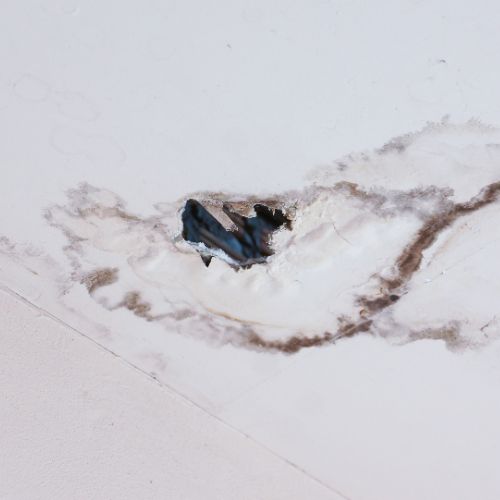Secret Considerations for a Successful Roof Covering Setup: Attaining Durability and Effectiveness
In embarking on the trip of roof installation, one should focus on key factors to consider to make sure both durability and effectiveness. The option of materials, tailored to withstand neighborhood environment problems, plays a critical role in maintaining structural integrity. As we discover these elements, it ends up being noticeable that an effective roofing system installation is not just concerning covering a structure but about crafting a resilient and lasting option.
Selecting the Right Materials

Climate plays a critical function in material choice. In areas vulnerable to hefty rains or snow, products like asphalt shingles or steel roof covering with high water resistance are advisable. Conversely, in hot climates, products with reflective residential or commercial properties, such as great roof covering membrane layers or floor tiles, can help in reducing power expenses by dispersing sunlight.
Budget plan considerations also influence material option. While premium materials like slate or clay tiles offer lasting performance, they feature greater ahead of time expenses. They can show cost-effective over time due to their marginal maintenance needs and expanded life-span.
Finally, the architectural design of the structure should integrate with the roof material. Conventional homes may profit from wooden tiles, whereas modern structures might opt for streamlined steel surfaces. By very carefully considering these aspects, you can choose products that line up with both useful and aesthetic objectives.

Understanding Roofing Layout
Understanding roofing layout is necessary in achieving a well-functioning and visually pleasing framework. The layout of a roof impacts not only the visual charm yet additionally the structural integrity and capability of the structure. A thoughtfully developed roofing can boost the total building design while ensuring efficient drain, insulation, and ventilation.
Trick components of roofing design include the pitch, form, and structural support group. The pitch, or incline, figures out exactly how effectively water and debris are lost from the roof covering surface area, impacting the life-span of roof materials. Usual roofing shapes consist of gable, hip, flat, and mansard, each offering distinctive benefits and aesthetic qualities. Gable roofs are prominent for their simplicity and reliable water dropping, while hip roofs supply extraordinary security in high wind areas.
Architectural support group, such as trusses and rafters, are vital in distributing weight and preserving the roof covering's integrity. Proper style makes certain that the roofing system can stand up to ecological loads and withstand contortion. Additionally, integrating functions like overhangs and eaves can shield the building's frontage and boost power efficiency by offering shade and minimizing warmth gain.
Eventually, a well-considered Website roofing layout balances form, operate, and toughness, contributing to the long-term success of the installment.
Environment Considerations

In warm and sunny climates, roof products have to reflect, as opposed to take in, solar heat to preserve power performance and protect against excessive thermal expansion, which can result in product destruction - Keep Dry Roofing St Peters MO. Alternatively, in cooler areas, products must provide appropriate insulation to protect against warmth loss and withstand freeze-thaw cycles that can cause breaking and other structural problems
Additionally, the option of color and finish can dramatically affect a roof's thermal performance, especially in areas with extreme temperature variations. Local building regulations often offer guidance on ideal products and layouts, showing regional climate issues. As a result, a complete understanding of climatic conditions is important for selecting materials and layouts that ensure a roof covering's optimum efficiency over its life expectancy.
Installment Best Practices
Effective roofing system installation is a vital element of making sure lasting sturdiness and performance. Making use of high-quality roof shingles, underlayment, and blinking customized to the specific climate and building style will certainly boost the roof's durability.
Similarly vital is the prep work of the roof deck. Guaranteeing that the deck is tidy, completely dry, and structurally audio prior to installation prevents problems such as leaks and premature wear. Appropriate air flow is one more vital factor discover here to consider, as it mitigates dampness accumulation and thermal stress, thus extending the roofing system's life expectancy.
Precision in measurement and alignment during the installation process is crucial. This involves accurate positioning of shingles and meticulous attention to overlapping, which prevents water access. Using specialist, skilled labor ensures these standards are fulfilled, lowering the threat of mistakes that might compromise the roof's effectiveness.
Power Efficiency Approaches
Enhancing a roof covering's power effectiveness is a tactical consideration for lowering power costs and ecological effect. By choosing suitable products and innovations, house owners and home builders can considerably improve the thermal efficiency of a roofing, therefore decreasing power consumption. Among the main strategies includes using reflective roof covering materials, which deflect more sunshine and take in less warm. This can lead to a significant reduction in cooling down costs, specifically in warmer climates.
Additionally, the consolidation of ample insulation is vital in protecting against heat transfer between the exterior and interior of a building. Insulation materials with high R-values, such as spray foam or inflexible foam boards, work in preserving a consistent indoor temperature level, thereby enhancing HVAC system efficiency.
Additionally, the assimilation of photovoltaic panels on rooftops not only produces eco-friendly power however can likewise provide shade, additional lowering heat gain (Keep Dry Roofing St Peters MO). Technologies like cool roofings, which use layers to mirror more sunlight, are likewise getting appeal for their capacity to decrease roofing system temperature levels
Verdict
To conclude, accomplishing a successful roof setup demands an extensive approach that integrates the option of premium products tailored to specific weather problems, thoughtful style factors to consider for optimum water drainage and architectural stability, and adherence to precise installation practices. These components jointly guarantee the prevention of moisture buildup and thermal anxiety, thus enhancing the roof's durability and performance. Including methods to improve power effectiveness even more contributes to lowering maintenance requirements and decreasing energy intake over the roofing's lifespan.